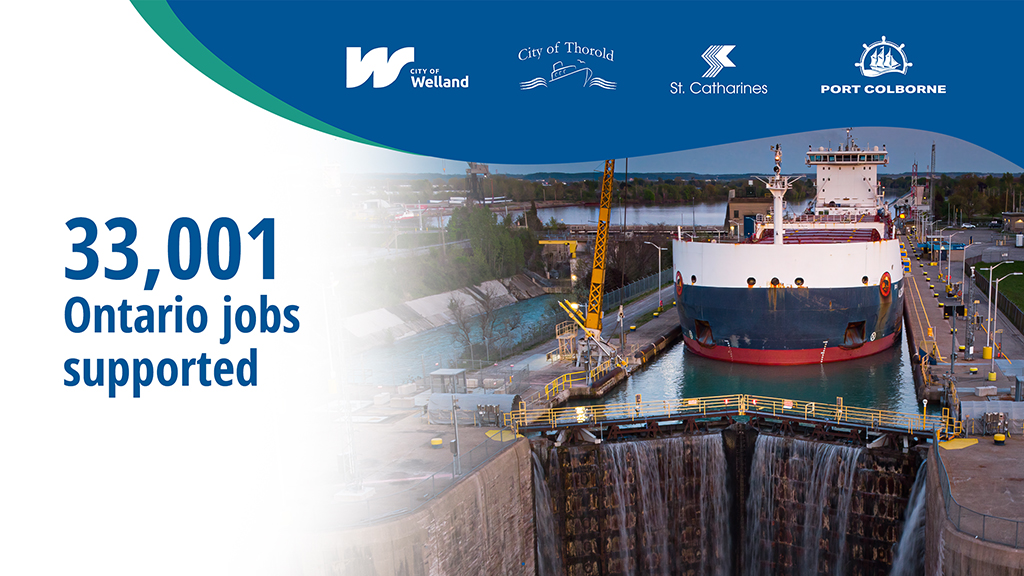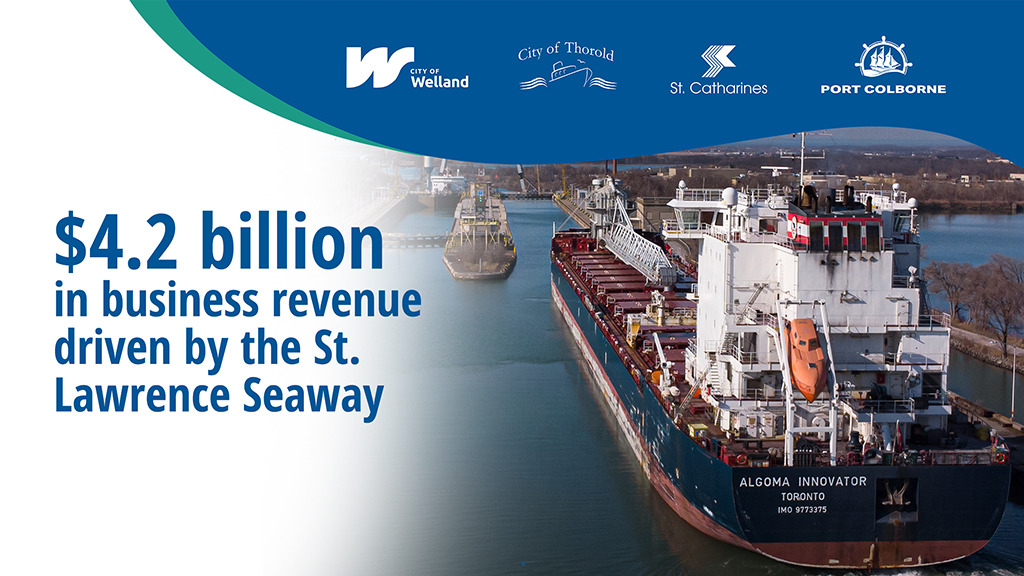the Seaway’s Economic Footprint in Ontario
Welland Canal
$4.9 Billion in Benefits: the Seaway’s Economic Footprint in Ontario


Niagara’s Welland Canal Corridor is at the heart of an immense trade system that brings tens of thousands of jobs and billions of dollars of economic activity to Ontario alone.
That’s among the findings of a 2023 study by the St. Lawrence Seaway Management Corporation, measuring the economic impact of the Seaway on both the United States and Canada. In 2022 alone, the Seaway generated $4.9 billion in economic activity for Ontario. The 33,001 Ontario jobs supported by the Welland Canal and Montreal-Lake Ontario locks made up half of the 66,594 jobs supported by the Seaway in the United States and Canada.
Ontario businesses generated substantial revenue from maritime trade. Businesses earned roughly $4.2 billion in 2022 based on the Seaway, money that helped fund $1.3 billion in purchases from local companies. Those earnings also helped pay Ontarians’ wages, totalling more than $1.9 billion. About $684 million of that impact consisted of direct wages, with another $735,000 coming from re-spending and consuming local products.
Of the nine American states and two Canadian provinces connected to the Great Lakes and accessing the Seaway and Welland Canal, Ontario reaped the largest share of the economic benefit, with the most jobs and the largest pool of generated economic activity. Only Indiana, with just over 11,000 jobs and $4 billion (CAD) in economic activity, came close. The number of jobs the Seaway created in Ontario alone was greater than the 24,275 it created in the entire United States.
In 2022 alone, roughly 36.3 million metric tons of cargo worth $16.7 billion (CAD) passed through the Seaway in both Ontario and Montreal. That is in line with the typical haul of nearly $40 million per year handled by the Welland Canal.
Governments in Ontario, both at the local and provincial level, reaped rewards from the Seaway. The lock system generated about $366 million in local and provincial taxes in Ontario, on top of $461 million in federal government taxes.
All told, the Seaway supported $12.3 billion in economic activity in the US and Canada, including supporting $5.4 billion in wages across both countries.
The Canal and the broader Seaway not only support jobs for Niagara and Ontario, they connect the region to the immense economy that is the broader Great Lakes trade network. Counting both the Seaway itself and the Great Lakes marine trade waterway, Ontario reaped an economic benefit of $9.6 billion, supporting 67,154 jobs.
Niagara sits at the heart of that enormous trade network. It connects businesses not only to the Seaway itself, but to road and rail transportation: 400-series highways, four land border crossings, railroad infrastructure and well-developed hydroelectricity and telecommunications infrastructure. The Niagara area is home to Ontario’s largest concentration of marine services.
From Lake Superior to the Great Lakes, the marine trade that sustains the Great Lakes economy flows through Niagara. The Welland Canal Corridor is the ideal place to be to be a part of that trade ecosystem.
This article is part of a feature series highlighting the importance and impact of the Welland Canal Corridor and the businesses that operate on and around it. This feature series is provided by the economic development offices of the Canal communities of St. Catharines, Welland, Thorold and Port Colborne.